PROMO!
First order? Get 10% OFF with this code: 1storder
Our Product Categories
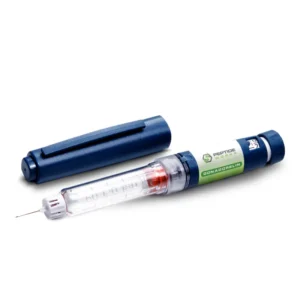
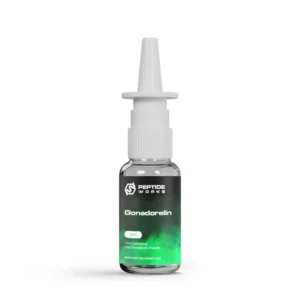
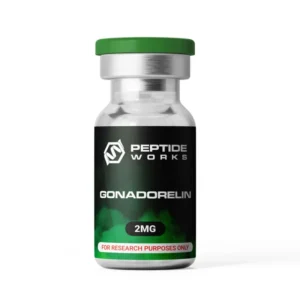
Gonadorelin is a synthetic version of gonadotropin-releasing hormone (GnRH), which is a hormone that occurs naturally in the body. It is produced by the hypothalamus in the brain. It plays an important role in controlling the reproductive system by triggering the pituitary gland to release two essential hormones: luteinizing hormone (LH) and follicle-stimulating hormone (FSH). These hormones are essential for reproductive processes, including ovulation in females and sperm production in males.
Gonadorelin is often used in research and clinical settings to help with hormonal issues like delayed puberty, infertility, and certain menstrual disorders. It’s also handy for checking how well the hypothalamus and pituitary gland are working.
Peptide Sequence (IUPAC Condensed): H-Pyr-His-Trp-Ser-Tyr-Gly-Leu-Arg-Pro-Gly-NH2
Molecular Formula: C55H75N17O13
Molecular Weight: 1182.3 g/mol
Synonyms: Gonadotropin-Releasing Hormone (GnRH)
View the Gonadorelin COA
View the Gonadorelin HPLC

Gonadorelin has been shown to imitate the natural gonadotropin-releasing hormone (GnRH) that is produced by the hypothalamus. It works by stimulating the pituitary gland to release two important sex hormones, which are necessary for reproduction. These are the luteinizing hormone (LH) and follicle-stimulating hormone (FSH).
The luteinizing hormone triggers ovulation in women and testosterone production in men. Whilst the follicle-stimulating hormone helps with egg development in the ovaries and sperm production. When administered in small, timed doses, these hormones work in sync with the body’s natural rhythms. However, giving them continuously lowers hormone levels, which helps treat conditions like endometriosis and prostate cancer.
In laboratory studies, gonadorelin is used to study the hypothalamic-pituitary-gonadal (HPG) axis, and in clinical settings, it helps diagnose or treat hormonal imbalances.
Restores or Supports Natural Hormone Function: Gonadorelin has been shown to restore the hypothalamic-pituitary-gonadal (HPG) axis function in secondary hypogonadism by mimicking natural pulsatile GnRH secretion. This stimulates luteinizing hormone (LH) and follicle-stimulating hormone (FSH) release, reactivating gonadotropin and testosterone production.
Studies highlight its effectiveness in treating hypothalamic hypogonadotropic hypogonadism and its broader roles in reproductive health, assisted reproduction, and neuroprotection. The GnRH/GnRHR system’s presence in various tissues underscores its potential in managing reproductive disorders and exploring neurogenesis and tumor biology [1].
Reproductive Health For Men: Studies show Gonadorelin helps men’s reproductive health. It does this by boosting LH and FSH, which in turn increases testosterone made by Leydig cells and aids sperm production through Sertoli cells [2]. Research has demonstrated that pulsatile administration improves sperm concentration and motility in men with secondary infertility caused by hypothalamic dysfunction [3].
It has also been shown to help preserve testicular function. By maintaining gonadotropin signaling, it can prevent the testicular atrophy that often comes with using exogenous testosterone or anabolic steroids [4]. This makes it a crucial therapy for treating hypogonadotropic hypogonadism and preserving fertility.
Female Reproductive Health: Gonadorelin plays a vital role in improving women’s reproductive health, particularly in cases of hypothalamic dysfunction. Research has demonstrated that by mimicking the natural pulsatile secretion of GnRH, it restores normal LH and FSH levels.By restoring these hormones, the peptide helps reactivate ovarian function and normalise menstrual cycles [5].
This targeted therapy effectively induces ovulation in women with hypothalamic amenorrhea or functional hypothalamic suppression. Additionally, it minimizes risks like ovarian hyperstimulation syndrome, offering a safe and physiology-based solution for infertility and enhanced reproductive outcomes [6].
Diagnostic Applications: Research has shown that Gonadorelin is a key diagnostic tool in endocrinology, particularly for assessing pituitary function. The GnRH stimulation test helps differentiate hypothalamic from pituitary causes of gonadotropin deficiency by measuring LH and FSH responses [7].
It is crucial in diagnosing conditions like hypogonadotropic hypogonadism, precocious puberty, and primary vs. secondary hypogonadism. Despite limitations in certain populations, such as obese children, gonadorelin testing remains essential for early detection, accurate classification, and effective management of reproductive disorders [8].
Anti-Cancer Effects: Scientific research indicates that Gonadorelin and its analogs exhibit significant anticancer effects by targeting hormone-dependent tumors. In men, they suppress prostate and testicular cancer growth through androgen deprivation therapy (ADT), reducing gonadotropin and androgen signaling, which improves survival rates in metastatic and localized prostate cancer [9].
In women, GnRH analogs inhibit proliferation and induce apoptosis in breast, ovarian, and endometrial cancers expressing GnRH receptors. Additionally, they lower estrogen levels in hormone-dependent breast cancer, reducing tumor growth and recurrence [10].
Buy Gonadorelin Pre-Mixed Peptide Pen from Peptide Works. Each 2 mg cartridge is available individually or as part of a complete kit that includes a reusable pen, needle tips, and a convenient carry case for simple and accurate preparation.
[1] L Casati, S Ciceri, R Maggi, and D Bottai (2023) Physiological and pharmacological overview of the gonadotropin releasing hormone – Biochemical Pharmacology, Volume 212, June 2023, 115553.
[2] O O Oduwole, H Peltoketo, and I T Huhtaniemi (2018) Role of Follicle-Stimulating Hormone in Spermatogenesis – Frontiers in Endocrinology (Lausanne), 2018 Dec 14, Volume 9, Page 763.
[3] R Fraietta, D Suslik Zylberstejn, and S C Esteves (2013) Hypogonadotropic Hypogonadism Revisited – Clinics (Sao Paulo), 2013 Feb, Volume 68 (Suppl 1), Pages 81–88.
[4] R Ramasamy, J M Armstrong, and L I Lipshultz (2014) Preserving fertility in the hypogonadal patient: an update – Asian Journal of Andrology, 2014 Oct 3, Volume 17 (Issue 2), Pages 197–200.
[5] M Filicori (2023) Pulsatile gonadotropin-releasing hormone: clinical applications of a physiologic paradigm – F & S Reports, 2023 Feb 2, Volume 4 (2 Suppl), Pages 20–26.
[6] B Męczekalski, O Niwczyk, C Battipaglia, L Troia, et al (2023) Neuroendocrine disturbances in women with functional hypothalamic amenorrhea: an update and future directions – Endocrine. 2023 Dec 7, Volume 84 (Issue 3), Pages 769–785.
[7] Siti Nadirah Ab Rahim, Julia Omar, Tuan Salwani Tuan Ismail (2020) Gonadotropin-releasing hormone stimulation test and diagnostic cutoff in precocious puberty: a mini review – Annals of Pediatric Endocrinology & Metabolism. 2020 Jul 30, Volume 25 (Issue 3), Pages 152–155.
[8] J Young, C Xu, G E Papadakis, J S Acierno, et al (2019) Clinical Management of Congenital Hypogonadotropic Hypogonadism – Endocrine Reviews, Volume 40, Issue 2, April 2019, Pages 669–710.
[9] Seungtaek Choi, and Andrew K Lee (2011) Efficacy and safety of gonadotropin-releasing hormone agonists used in the treatment of prostate cancer – Drug, Healthcare & Patient Safety, 2011 Dec 22, Volume 3, Pages 107–119.
[10] M Huerta-Reyes, G Maya-Núñez, M A Pérez-Solis, E López-Muñoz, et al (2019) Treatment of Breast Cancer With Gonadotropin-Releasing Hormone Analogs – Frontiers in Oncology, 2019 Oct 1, Volume 9, Page 943.
The answers to the most frequently asked questions about Gonadorelin.

Buy Gonadorelin Peptide Nasal Spray from Peptide Works. Available in 15ml and 30ml spray bottles, this non-invasive delivery format offers a practical and efficient alternative for consistent application.
Gonadorelin signals the brain to release LH and FSH, which help the testes produce testosterone. While it can cause a short spike in testosterone, the effect fades quickly because the peptide acts for only a short time. Studies don’t confirm it as an effective option for post-cycle therapy or long-term testosterone recovery.
Gonadorelin can help restore fertility when natural GnRH release is too low. It works by triggering LH and FSH, hormones needed for sperm and egg production. Research shows pulsatile dosing can restart reproductive function in such cases, but it is not a common fertility treatment and is mainly used as a research peptide.
Gonadorelin is available worldwide as a research peptide. It can be purchased legally for laboratory and research use in most countries. While it is not approved by the FDA or similar agencies for human use, reputable suppliers follow strict manufacturing standards to ensure product quality and purity for scientific research purposes.
Gonadorelin is generally well tolerated in research settings. Reported side effects are mild and may include temporary redness, itching, or swelling at the injection site. Some studies note brief headaches, flushing, or dizziness. Serious reactions are rare. Proper handling and storage help maintain product stability and reduce the risk of unwanted effects.
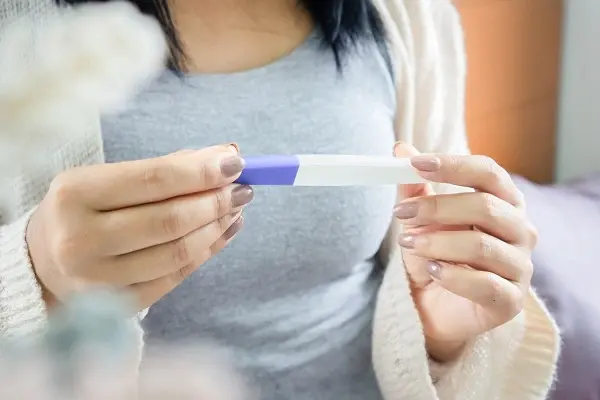
This blog explores the expanding field of fertility peptides like Gonadorelin, HCG, and PT-141, focusing on their roles in hormone regulation, reproductive health, and fertility research. It explains how these peptides work, their applications for both men and women, and their potential in assisted reproductive technologies, such as IVF.
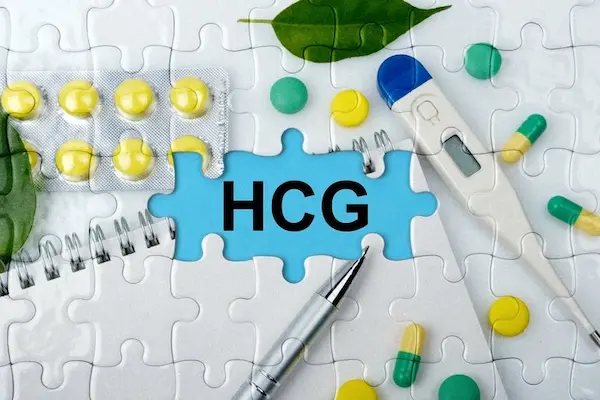
This blog explores the differences between Gonadorelin Peptide and HCG, two compounds used in scientific research to boost hormone levels. It compares their structures, mechanisms, and effectiveness, highlighting Gonadorelin's rapid action versus HCG's long-lasting effects. Researchers can choose the right compound based on study goals, timing, and duration requirements.
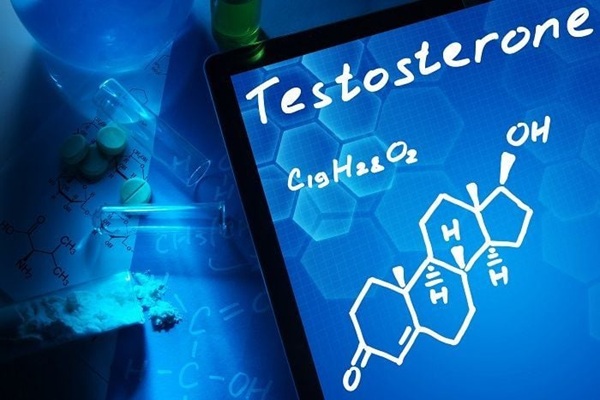
This blog explains how Triptorelin affects hormones in research. It shows why the peptide first raises testosterone, then lowers it over time. It also compares Triptorelin with Kisspeptin and Gonadorelin, which raise testosterone instead. The article helps readers understand how different peptides change hormone signals in studies.
ALL CONTENT AND PRODUCT INFORMATION AVAILABLE ON THIS WEBSITE IS FOR EDUCATIONAL PURPOSES ONLY.
DISCLAIMER: These products are intended solely as a research chemical only. This classification allows for their use only for research development and laboratory studies. The information available on our Peptide Works website: https://peptide-works.com/ is provided for educational purposes only. These products are not for human or animal use or consumption in any manner. Handling of these products should be limited to suitably qualified professionals. They are not to be classified as a drug, food, cosmetic, or medicinal product and must not be mislabelled or used as such.